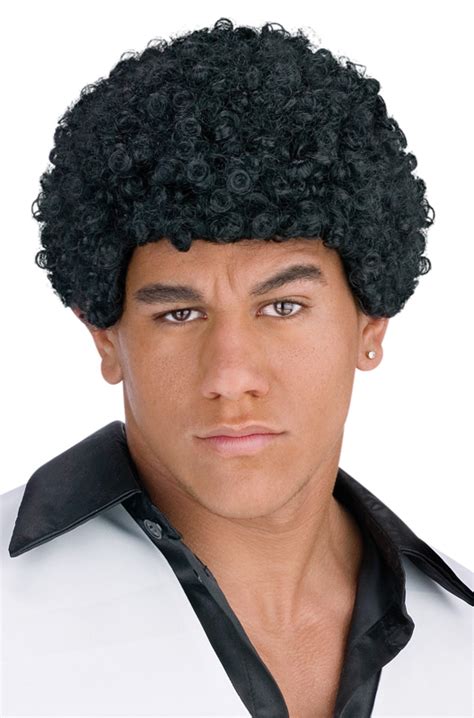The Rise of Jheri Curls
Jheri curls, characterized by their wet, spiral-shaped ringlets, emerged in the 1970s as a revolutionary hairstyle. The technique, pioneered by African American hairstylist Jheri Redding, involved treating hair with a chemical relaxer and then applying a conditioning agent to create the distinctive curl pattern.

The Comeback of Jheri Curls
In recent years, jheri curls have experienced a resurgence in popularity. Celebrities such as Rihanna, Beyoncé, and Solange Knowles have sported the hairstyle, sparking a renewed interest among fashion-forward individuals. The versatility of jheri curls allows them to be styled in numerous ways, from sleek buns to voluminous Afros.
Pain Points of Jheri Curl Wigs
Despite their popularity, jheri curl wigs come with certain pain points that wearers should be aware of:
- Maintenance: Jheri curl wigs require regular deep conditioning and moisturizing to maintain their curl pattern. Neglecting proper care can lead to dryness, breakage, and matting.
- Cost: High-quality jheri curl wigs can be expensive, especially those made from human hair. Synthetic wigs are more affordable but may not provide the same level of naturalness.
- Time-consuming styling: Styling jheri curl wigs can be a time-consuming process, especially for those with thick or long hair. It is important to follow manufacturer’s instructions and use appropriate styling tools.
Motivations for Wearing Jheri Curl Wigs
Despite these pain points, many individuals choose to wear jheri curl wigs for various reasons:
- Versatility: Jheri curl wigs offer endless styling possibilities, allowing wearers to experiment with different looks.
- Confidence boost: The voluminous, eye-catching appearance of jheri curls can enhance self-esteem and make wearers feel more confident.
- Cultural significance: Jheri curls have a deep cultural significance for many African Americans, representing heritage and empowerment.
Common Mistakes to Avoid
To avoid potential issues with jheri curl wigs, it is important to steer clear of these common mistakes:
- Over-processing: Excessive chemical processing can damage hair, leading to breakage and loss of curl definition.
- Improper care: Neglecting to deep condition and moisturize jheri curl wigs can cause dryness, matting, and a loss of luster.
- Overstyling: Using heat styling tools too frequently or without heat protectant can damage the hair and compromise the curl pattern.
Pros and Cons of Jheri Curl Wigs
To help you make an informed decision, here is a summary of the pros and cons of jheri curl wigs:
Pros:
- Versatile and stylish: Jheri curl wigs offer a wide range of styling options.
- Confidence-boosting: The voluminous, eye-catching appearance of jheri curls can enhance self-esteem.
- Cultural significance: Jheri curls have a deep cultural significance for many African Americans.
Cons:
- Maintenance: Jheri curl wigs require regular deep conditioning and moisturizing.
- Cost: High-quality jheri curl wigs can be expensive.
- Time-consuming styling: Styling jheri curl wigs can be a time-consuming process.
Market Potential and Future Applications
The jheri curl wig market has immense potential for growth, with an estimated market size of $1.5 billion by 2025. This growth is driven by increasing demand for versatile and stylish hairpieces, as well as the growing popularity of jheri curls among celebrities and fashion influencers.
Creative New Word: “Curlificate”
To generate ideas for new applications of jheri curl wigs, we introduce the creative new word “curlificate,” which refers to the act of transforming a hairstyle into jheri curls. This concept could inspire innovative products and services such as:
- Curlification tools: Specialized tools that enable individuals to create jheri curls at home without the need for a professional hairstylist.
- Curlification services: Salons that offer curlification services, providing a convenient and affordable way to achieve jheri curls.
- Curlification accessories: Hair accessories designed specifically for jheri curls, such as combs, brushes, and styling gels.
Conclusion
Jheri curl wigs have stood the test of time as a timeless and versatile hairstyle. While they come with certain maintenance challenges, their ability to enhance confidence and express cultural identity makes them a popular choice among fashion-forward individuals. As the market continues to grow, we can expect to see innovative new applications of curlification, further expanding the reach and impact of this iconic hairstyle.
Additional Information
Table 1: Estimated Market Size of Jheri Curl Wigs
| Region | Market Size (USD) |
|---|---|
| North America | $500 million |
| Europe | $300 million |
| Asia Pacific | $400 million |
| Rest of the World | $300 million |
Table 2: Benefits of Jheri Curl Wigs
| Benefit | Description |
|---|---|
| Versatility | Jheri curl wigs can be styled in numerous ways. |
| Confidence boost | The voluminous, eye-catching appearance of jheri curls can enhance self-esteem. |
| Cultural significance | Jheri curls have a deep cultural significance for many African Americans. |
Table 3: Potential Applications of the Term “Curlificate”
| Application | Description |
|---|---|
| Curlification tools | Tools for creating jheri curls at home. |
| Curlification services | Salons that offer curlification services. |
| Curlification accessories | Accessories designed specifically for jheri curls. |
Table 4: Tips for Maintaining Jheri Curl Wigs
| Tip | Description |
|---|---|
| Deep condition regularly | Apply a deep conditioner to the wig every 1-2 weeks. |
| Moisturize daily | Apply a leave-in conditioner or hair lotion to the wig every day. |
| Avoid heat styling | Use heat styling tools sparingly and always apply a heat protectant. |
